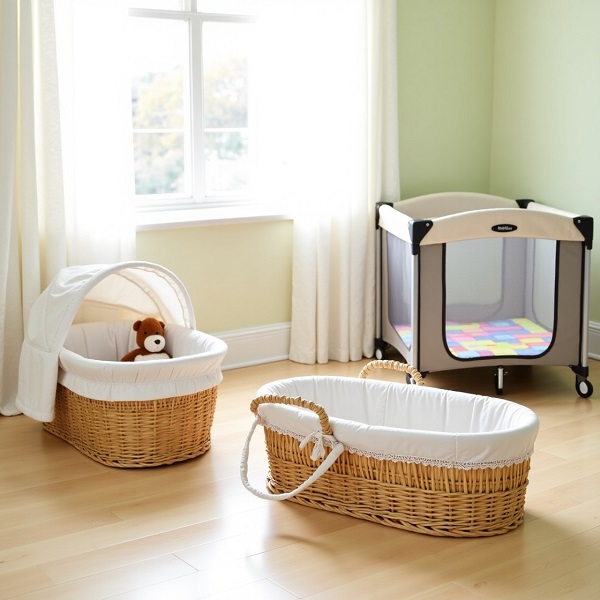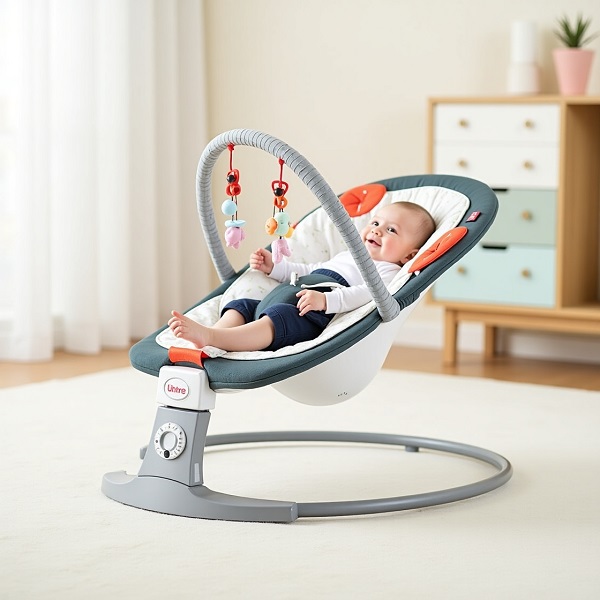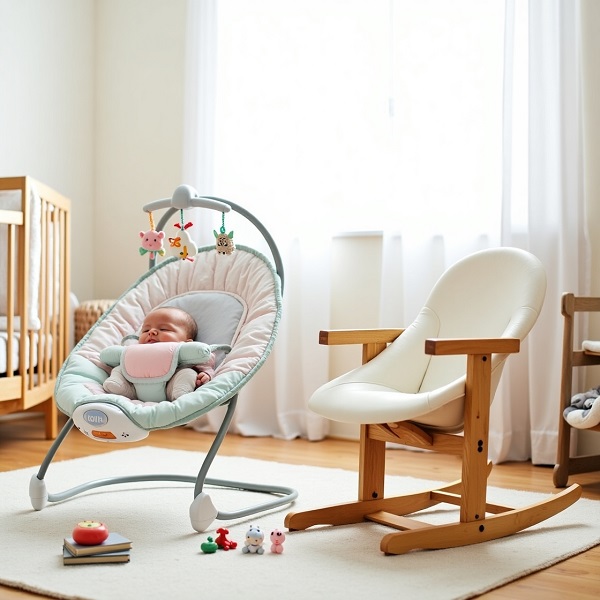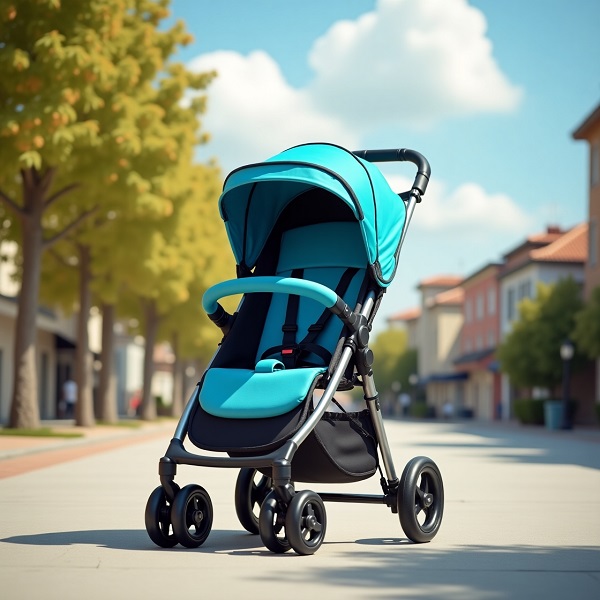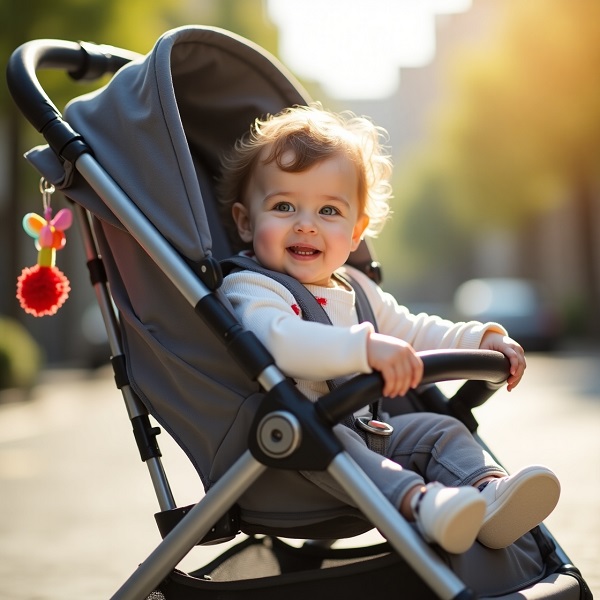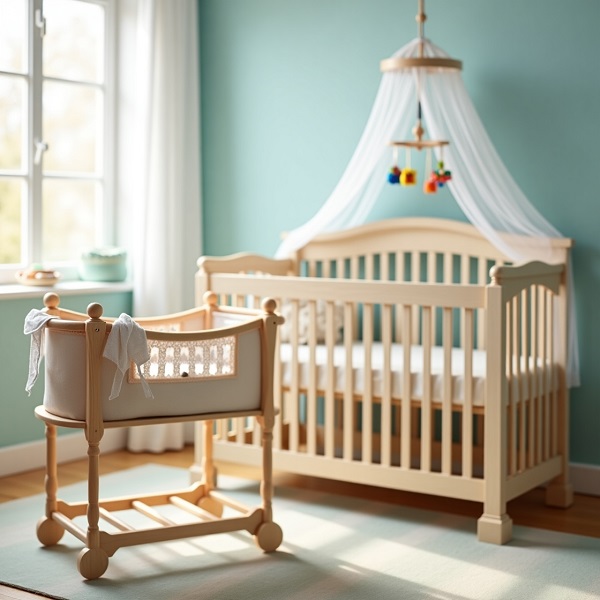Preparing for a new baby often comes with a long checklist, and somewhere near the top sits the question: Where will the baby sleep? For many parents, the default answer has always been a crib. It’s long been seen as the gold standard of infant sleep spaces—safe, traditional, and dependable.
The truth is, while cribs remain a popular choice, they’re no longer the only safe or practical option. Cultures around the world raise babies safely without them, using everything from woven bassinets to floor mats. Even in Western societies, more parents are rethinking the crib in favor of alternatives that better align with their lifestyles.
In this guide, we’ll explore the most trusted options available, discuss when and why they might be a better fit, and walk you through how to choose the right sleep space without compromising your baby’s well-being—or your peace of mind.
If you’re wondering what your baby can sleep in besides a crib, you’re in the right place.
Is a Crib Really Necessary?
The idea that every baby needs a crib is deeply rooted in modern parenting culture, especially in Western countries. But the reality is that not every family needs a crib, and not every baby sleeps best in one.
Cribs offer clear advantages—they’re durable, structurally stable to minimize tipping or collapse, and spacious enough for a growing baby to stretch, roll, and move comfortably.
However, for families living in small spaces like urban apartments, tiny homes, or shared bedrooms, a full-sized crib may not be practical. Those who travel frequently often prefer a portable sleep solution that can adapt to different environments.
In fact, throughout history and across many cultures, cribs have not always been the norm. Babies have slept in hammocks, on firm mats, in baskets, or safely next to their parents. What matters most is not the specific piece of furniture, but whether the sleep space is safe, supportive, and developmentally appropriate.
The American Academy of Pediatrics (AAP) advises that infants sleep on a firm, flat surface with no loose bedding, pillows, or soft toys to help reduce the risk of Sudden Infant Death Syndrome (SIDS). However, they don’t mandate that this surface has to be a traditional crib. As long as the sleep space adheres to safety standards—no gaps, no suffocation hazards, and proper breathability—many alternatives can be just as secure.
Top 5 Safe Crib Alternatives for Different Needs
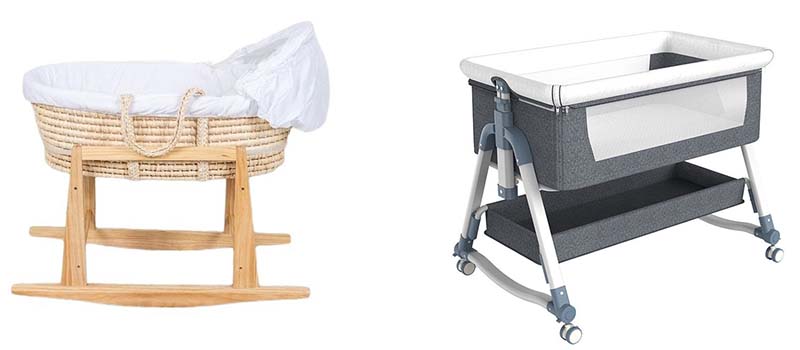
Bassinets
Bassinets are a favorite among new parents—and for good reason. Designed specifically for newborns, they offer a snug, elevated sleep space that fits right beside your bed, making those frequent night feedings and check-ins less disruptive. In the early weeks, when your baby’s needs are constant and your energy is thin, that close proximity can be invaluable.
The magic lies in their intentional design limitations—the compact size triggers a calming containment response in infants, while breathable mesh walls maintain crucial airflow.
Naturally, bassinets are a temporary solution, as babies usually outgrow them by 4 to 6 months. While they have a shorter lifespan than cribs, their affordability and convenience make them a popular choice for the newborn phase.
Moses Basket
These ancient sleep vessels have endured for millennia because they perfectly blend form and function. Unlike rigid cribs, Moses baskets move with your life, transforming any space into an instant nursery. Their secret weapon? Human biomechanics.
Traditionally made from natural materials such as palm, maize, willow, or seagrass, Moses baskets are both lightweight and sturdy. They typically include a firm mattress and soft interior padding, creating a snug environment that mimics the security of the womb.
While Moses baskets might seem like a bohemian throwback, their design is surprisingly evidence-based. Natural willow and seagrass fibers offer superior temperature regulation compared to plastic bassinets, maintaining an average 2-3°F cooler environment—critical since overheating is a known SIDS risk factor.
Playards/Pack ‘N Play
Few baby items are as multifunctional—or as underestimated—as the playard. Often referred to as a Pack ‘N Play, these modular systems grow with your child in ways cribs physically can’t—transitioning seamlessly from bassinet to play space to toddler bed without wasting money or space.
Many models come with a removable bassinet insert designed for newborns, allowing safe and elevated sleep in the early months. As your baby grows, the bassinet can be removed, transforming the space into a full-sized playard for naps, playtime, or independent lounging. Some versions even include built-in changing tables or storage compartments, making them especially useful for multitasking parents or tight living spaces.
For urban families managing limited square footage, or for those who want one solution for both home and travel, the playard earns its reputation as a multitasking powerhouse.
Co-Sleepers
The medical establishment’s war on bed-sharing created an unnecessary divide between safety and bonding—until co-sleepers bridged the gap. These hybrid solutions offer what cribs fundamentally can’t: easy nighttime access without compromising safety protocols.
Co-sleepers—often called bedside sleepers—are specially designed sleep spaces that allow your baby to sleep right next to you, without actually sharing the same bed. By providing an independent sleep surface within arm’s reach, co-sleepers help minimize nighttime disruptions while supporting breastfeeding and parental well-being.
Pediatric guidelines recommend room-sharing—without bed-sharing—as the safest sleeping arrangement for infants during their first six to twelve months.
Floor Beds/Montessori Beds
Though a floor bed might seem unconventional initially, it’s a carefully designed sleep solution grounded in Montessori philosophy—highlighting independence, freedom of movement, and respect for a child’s natural growth.
A Montessori bed usually consists of a basic mattress set directly on the floor (or a low frame) within a baby-proofed space that allows the child to explore freely. The absence of bars or rails is intentional: it invites the child to move, to discover, and to self-regulate sleep in a way that aligns with natural development.
Safety, of course, is key. Floor beds require a fully baby-proofed room—soft flooring, anchored furniture, covered outlets—since the child has access to the space while unsupervised. But when thoughtfully set up, the floor bed can be a safe, empowering alternative to traditional cribs or toddler beds.
Where Should Baby Sleep on the Go?
Life with a baby doesn’t happen entirely within the four walls of a nursery. There are grandparents’ houses to visit, weekend road trips to take, weddings to attend, and errands that run later than expected. In those moments, having a safe and familiar sleep option on the go isn’t just convenient — it’s the difference between a peaceful nap and a meltdown in the middle of a family gathering.
For many parents, the travel crib or playard is the gold standard of portable sleep. It’s sturdy enough for overnight stays yet folds into a compact bundle you can toss in the car. The beauty lies in consistency: the same mesh sides, the same firm mattress, the same smell of the sheets. To a baby, that familiarity is a signal that it’s time to rest, no matter how strange the surroundings.
But not every on-the-go sleep need calls for a full-size travel crib. For newborns, a portable bassinet or Moses basket can feel like a cozy extension of home. Light enough to carry from car to living room, they let you settle your baby without the fuss of setting up a larger piece of gear.
For parents who move frequently between rooms or outdoor spaces — think picnics in the park, afternoons in the backyard, or visiting friends — a compact, fully reclining stroller can double as a safe nap spot if it meets flat-sleep safety standards.
What to Consider Before Choosing a Crib Alternative?

Your Living Space Shapes the Sleep Space
Is your home spacious or compact? Are you working with a dedicated nursery or sharing your bedroom with your baby? The size and layout of your home should play a major role in your choice. Crib alternatives like bassinets, Moses baskets, and playards offer much more flexibility, both in size and placement.
Frequency of Going Out
Think about how often you’ll be on the move. Some parents spend their baby’s first year rooted mostly at home, while others are bouncing between relatives’ houses or traveling for work. If mobility is part of your reality, a lightweight, foldable sleep solution can be the difference between keeping a routine and losing it entirely.
Daily Routines and Nighttime Realities
If you’re recovering from childbirth, particularly a C-section, bending or reaching into a deep crib can be uncomfortable or even painful. A co-sleeper or bedside bassinet allows you to care for your baby with less strain, helping you heal while staying connected.
Long-Term Value vs. Short-Term Convenience
Crib alternatives vary widely in how long they’re useful. Some, like bassinets or Moses baskets, are perfect for the newborn stage but become obsolete within a few months. Others, like playards or Montessori floor beds, grow with your child into toddlerhood and beyond.
Conclusion
The crib has long been the default choice for infant sleep, but as we’ve explored, it’s far from the only option—or even the best one for every family. From bassinets to floor beds, today’s parents have more choices than ever, each with its own benefits and considerations.
The most surprising insight? Many families benefit from staged sleep solutions—using different setups as their baby grows. A bassinet might be perfect for the newborn phase, a playard for travel and toddlerhood, and a floor bed for encouraging independence. There’s no rule saying you must pick one solution forever.

